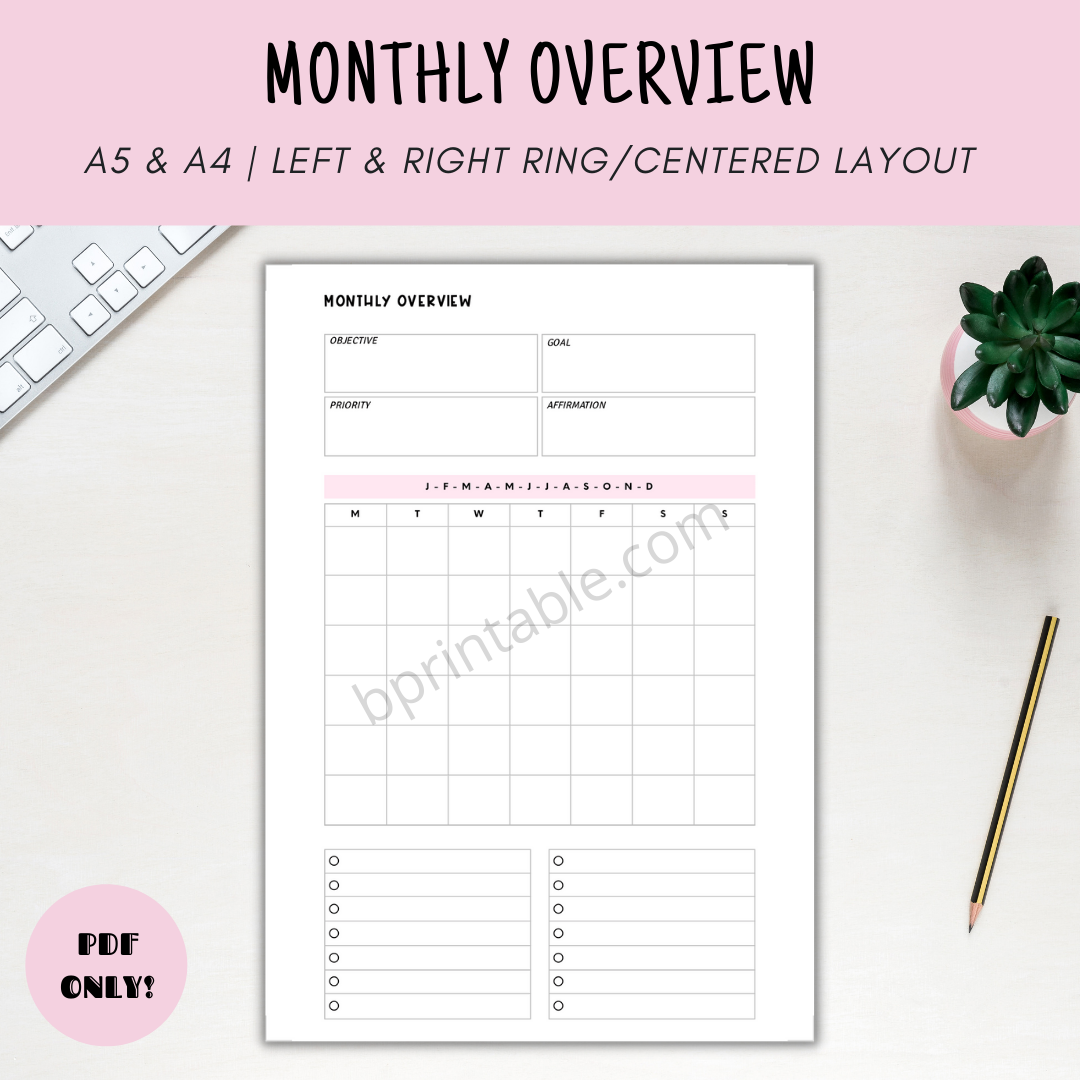Are you often overwhelmed by the countless tasks, appointments, and goals you need to keep track of? If so, a monthly overview planner could be your ultimate solution. In this article, we’ll guide you through the steps to effectively use a monthly overview planner to enhance your productivity, stay organized, and achieve your goals without breaking a sweat.
A monthly overview planner is more than just a collection of dates; it’s a dynamic tool designed to empower you in managing your time, tasks, and objectives. With the right approach, you can transform it into a game-changer for your daily life.
Choosing the Right Monthly Overview Planner
Before diving into planning, it’s essential to choose a planner that resonates with you. Look for one that offers ample space for each day, a section for notes, and perhaps some motivational quotes to keep you inspired.
You can browse different types of monthly planner HERE
Setting Up Your Monthly Overview
Start by marking important dates, such as meetings, appointments, birthdays, and deadlines. Having a bird’s-eye view of your month ensures you never miss a beat.
Prioritizing Your Goals
What do you want to achieve this month? Whether it’s professional, personal, or health-related goals, list them down. This sets the tone for your planning process.
Breaking Down Monthly Goals into Weekly Tasks
Divide your monthly goals into actionable tasks. Assign specific tasks to each week, distributing the workload evenly to prevent last-minute rushes.
Creating a Weekly Overview
At the beginning of each week, review your monthly goals and weekly tasks. This helps you realign your focus and mentally prepare for the week ahead.
Daily Entries and Task Management
Now comes the daily grind. Use your planner to jot down daily tasks, appointments, and reminders. The satisfaction of checking off completed tasks is incredibly motivating.
Utilizing Habit Tracking
Planners are excellent for building habits. Dedicate a section to habit tracking, such as drinking enough water, exercising, or reading a few pages of a book.
Reflecting and Adapting
Regularly pause to reflect on your progress. Are you on track with your goals? If not, adjust your strategy. Flexibility is key to long-term success.
Staying Consistent
Consistency is the secret sauce. Make your planner a non-negotiable part of your routine. The more you use it, the more seamless planning becomes.
Avoiding Overload
While enthusiasm is admirable, avoid overloading your schedule. Leave room for spontaneity and relaxation. A balanced approach prevents burnout.
Balancing Work and Personal Life
Your planner isn’t just for work tasks. Allocate time for family, hobbies, and self-care. Achieving work-life balance contributes to overall well-being.
Incorporating Mindfulness
Practice mindfulness by adding a gratitude section to your planner. Jot down things you’re thankful for each day. This simple habit fosters positivity.
Reviewing and Celebrating Wins
At the end of the month, review your achievements. Celebrate even the smallest wins. This positive reinforcement fuels your motivation for the upcoming month.






